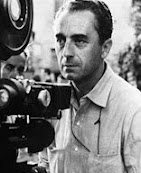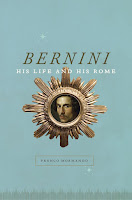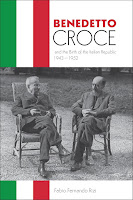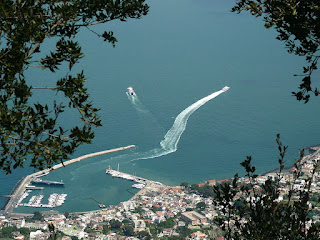Michelangelo Antonioni - film director
Enigmatic artist often remembered for 1966 movie Blowup
The movie director Michelangelo Antonioni, sometimes described as “the last great” of Italian cinema’s post-war golden era, died on this day in 2007 at his home in Rome. Antonioni, who was 94 years old when he passed away, was a contemporary of Federico Fellini and Luchino Visconti. Remarkably, three of that trio’s most acclaimed works - Fellini’s La dolce vita, Visconti’s Rocco and His Brothers and Antonioni’s L’avventura - appeared within a few months of one another. Antonioni’s genius lay in the way he challenged traditional approaches to storytelling and drama and the way people viewed the world in general. His characters were often intentionally vague, his most favoured themes being social alienation and bourgeois ennui, reflecting his view that life left many people emotionally adrift and unable to find their bearings. Read more…
_____________________________________
Vittorio Erspamer - chemist
Professor who first identified the neurotransmitter serotonin
Vittorio Erspamer, the pharmacologist and chemist who first identified the neurotransmitter serotonin, was born on this day in 1909 in the small village of Val di Non in Malosco, a municipality of Trentino. Serotonin, also known as 5-hydroxytryptamine (5-HT), is found in the gastrointestinal tract, blood platelets and central nervous system of animals, including humans. It is popularly thought to be a contributor to feelings of well-being and happiness. A generation of anti-depressant drugs, including Prozac, Seroxat, Zoloft and Celexa, have been developed with the aim of interfering with the action of serotonin in the body in a way that boosts such feelings. The name serotonin was coined in the United States in 1948 after research doctors at the Cleveland Clinic in Ohio discovered a vasoconstrictor substance - one that narrows blood vessels - in blood serum. Read more…
Adriano Galliani - entrepreneur and football executive
Businessman was CEO of AC Milan in golden era
The entrepreneur Adriano Galliani, who was chief executive of AC Milan for 21 years, was born on this day in 1944 in Monza, the Lombardy city a little under 20km (12 miles) north of Milan. With Galliani at the helm, Milan won the Serie A title eight times and were five-times winners of the Champions League in what was a golden era for the club. Galliani became CEO at the club in 1986 when the ownership transferred to Silvio Berlusconi, the businessman and future prime minister with whom he had created the commercial TV company Mediaset. He was responsible for some of the club’s most spectacular player signings, persuading such global stars as Marco van Basten, Ruud Gullit, George Weah, Andriy Shevchenko and Kaka to sign for the club. All five won the Ballon D’Or, the annual award given to the player judged to the best in all the European leagues, while Milan players. Read more…
_______________________________________
Naples earthquake of 1626
Devastating tremor and tsunami killed 70,000
The region around Naples, one of the most physically unstable areas of high population in the world with a long history of volcanic activity and earthquakes, suffered one of its more devastating events on this day in 1626. An earthquake that it has been estimated would register around seven on the modern Richter scale struck the city and the surrounding area. Its epicentre was about 50km out to sea, beyond the Bay of Naples and the island of Capri to the south, but the shock waves were strong enough to cause the collapse of many buildings in the city and the destruction of more than 30 small towns and villages. A tsunami followed, in which according to some reports the sea receded by more than three kilometres (two miles) before rushing back with enormous force, towering waves engulfing the coastline. Read more…
_____________________________________
Book of the Day: The Films of Michelangelo Antonioni, by Peter Brunette
The Films of Michelangelo Antonioni provides an overview of the Italian director's life and work, and examines six of his most important and intellectually challenging films. L'avventura, La notte, and L'eclisse, released in the early 1960s, form the trilogy that first brought the director to international attention. Red Desert was his first film in colour. Blow-up, shot in English and set in swinging London, became one of the best-known (and most notorious) films of its era. The Passenger, starring Jack Nicholson, is the greatest work of his maturity. Rather than emphasizing the stress and alienation of Antonioni's characters, in this book Peter Brunette places the films in the context of the director's ongoing social and political analysis of the Italy of the great postwar economic boom, and demonstrates also how they are formal exercises that depend on painterly abstraction for their expressive effects.
Peter Brunette was a film critic and film historian who taught Film Studies at Wake Forest University in North Carolina. He was the author of several books, including studies of Italian directors Roberto Rossellini and Michelangelo Antonioni.





.jpg)

.jpg)


.jpg)
.jpg)
.jpg)




_-_n._8180_-_Casamicciola_-_Piccola_Sentinella.png)


